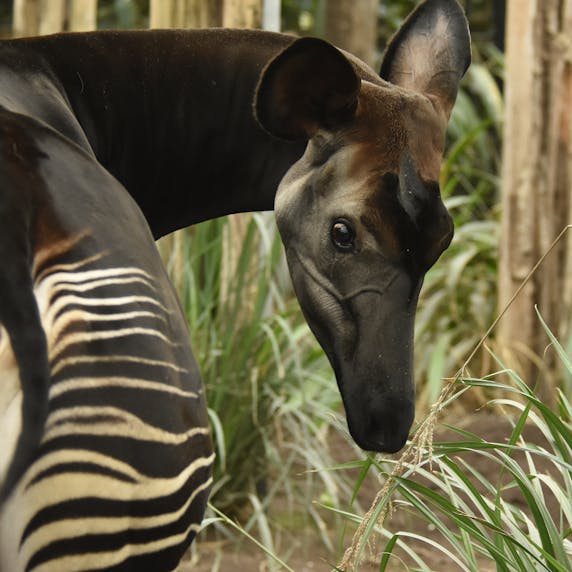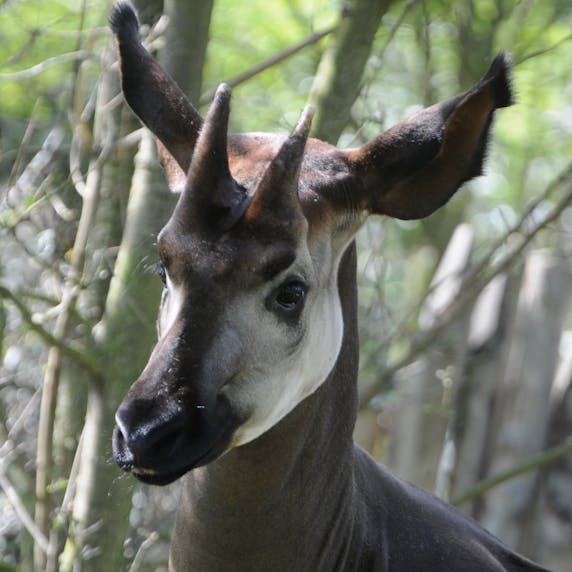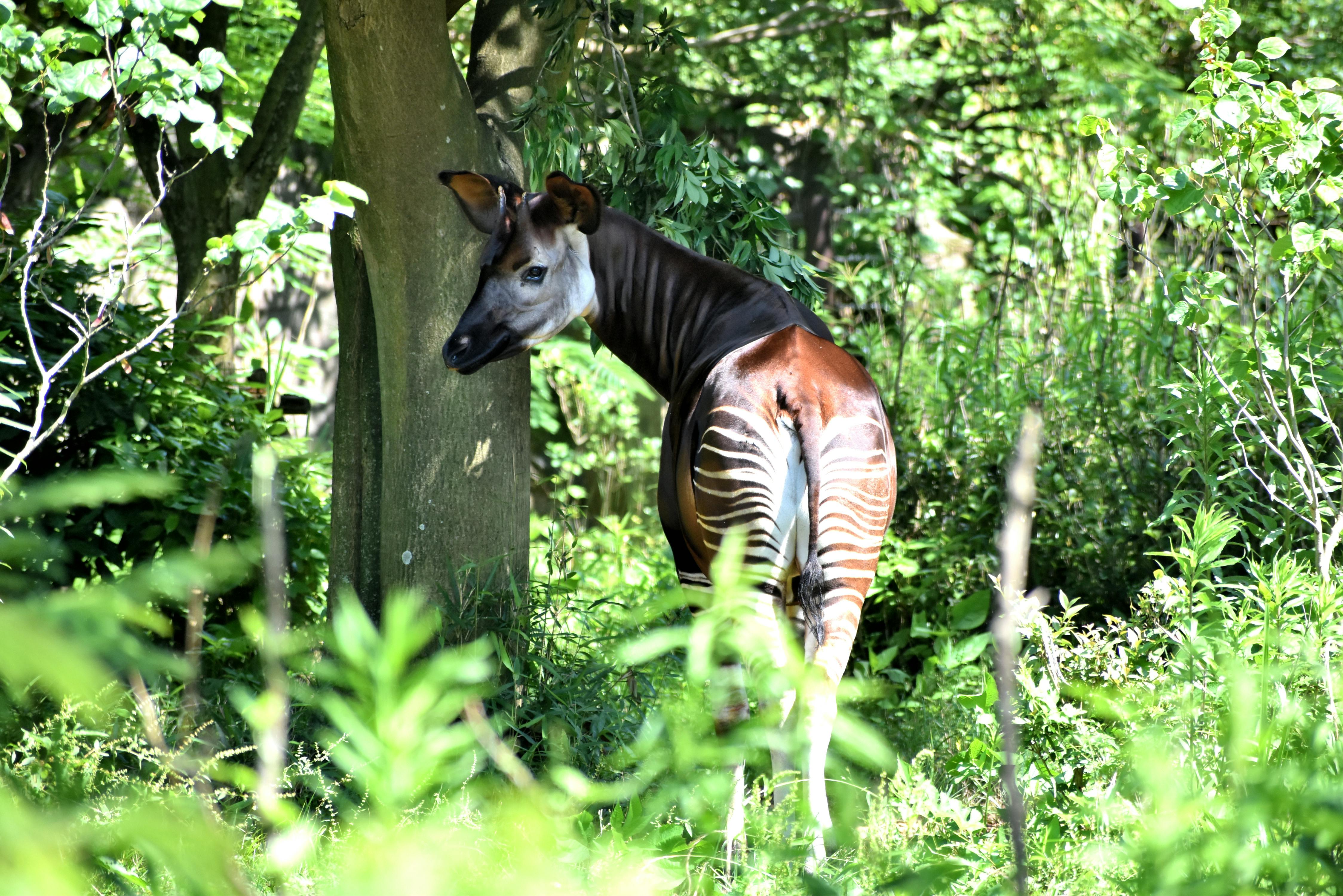
Although the okapi may look like a hybrid between a horse and a zebra, it belongs to an entirely different family. In fact, the okapi is the only living relative of the giraffe. Because this shy animal is found deep in the jungles of Africa, it has only been known to the Western world since 1901. But since 1995, the number of okapis in the wild has declined rapidly. That's why Rotterdam Zoo is helping to protect the okapi.
Okapia johnstoni

Up to 20 years
1.5 – 1.7 meters
2 meters
180 – 300 kilograms
The okapi can be recognized by its dark brown fur with white stripes on its front and back legs. This "barcode" is unique to each okapi. You can tell the difference between females and males by the horns; bulls have two knobby horns on top of their heads, cows do not.
Okapis are found only in a small area of central Africa, in the Democratic Republic of Congo. They live in dense rainforests. Okapis are animals that live in territories, with a male's territory often covering the ranges of several females.
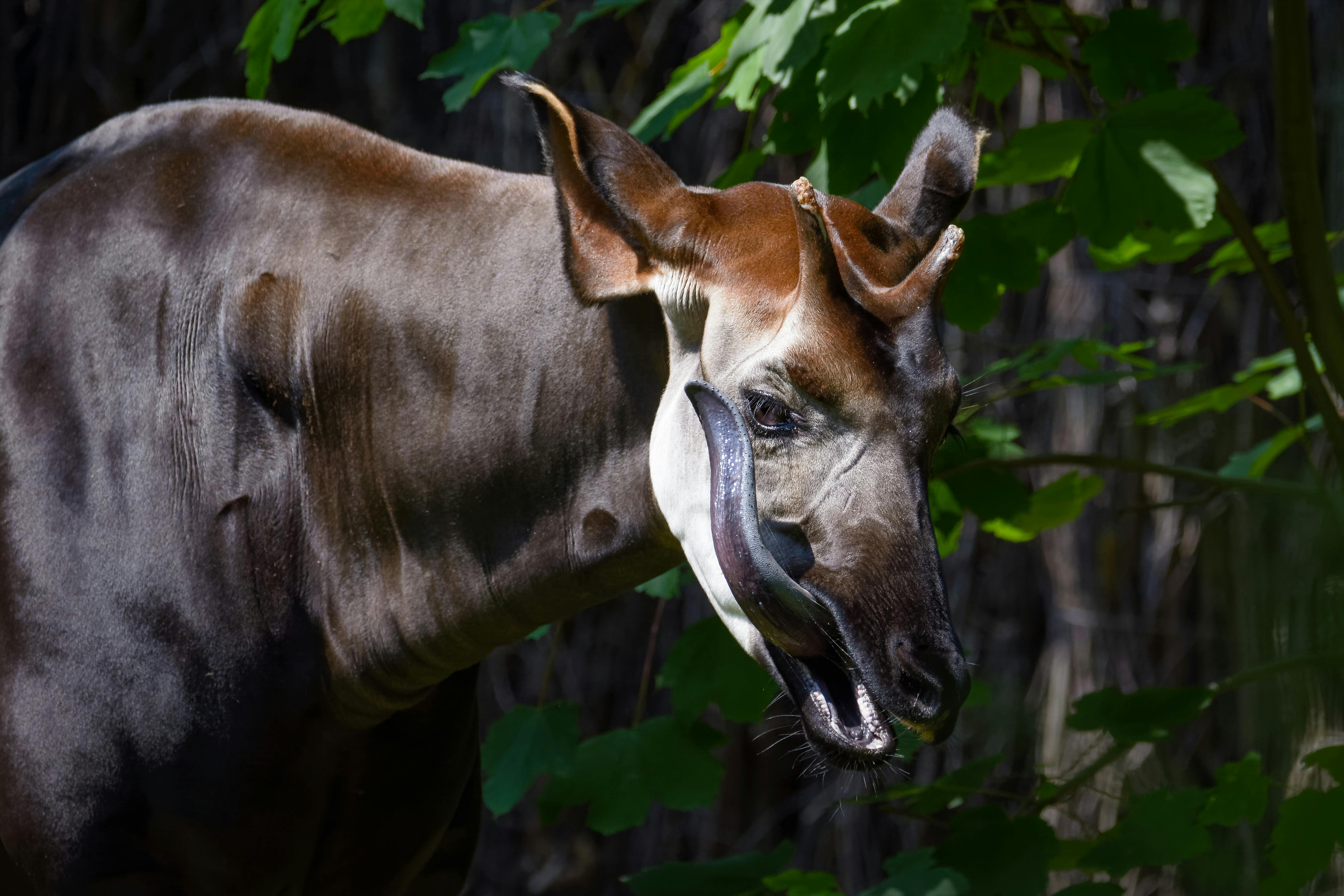
Like giraffes, okapis have a long tongue, which can be up to 35 centimeters in length. They use their tongue to grab tree branches. This allows them to reach higher leaves than other ungulates in their habitat, such as the bongo. They also uses their tongue to smell and to clean themselves. An okapi can even lick its own eyelids clean with it!
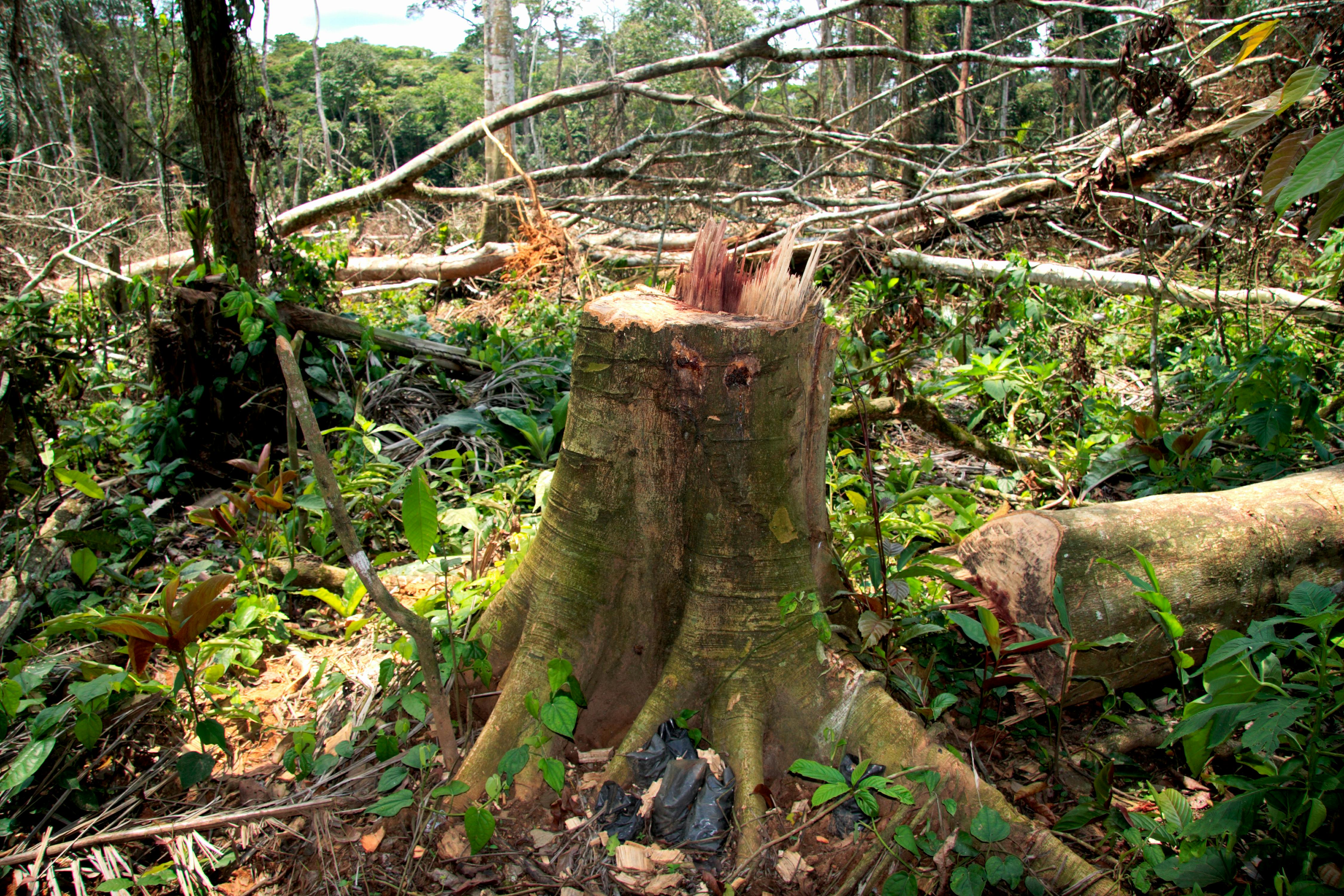
The okapi's habitat is under severe pressure. The rainforests are being logged on a massive scale for timber and to make way for mining. Because the okapi habitat is politically unstable and armed groups are hiding in the forest, it is difficult to protect the okapis. As a result, illegal poaching has also increased significantly. Although it is difficult to estimate how many okapis remain in the wild, it does appear that numbers are declining rapidly.
Rotterdam Zoo supports the Okapi Conservation Project, which works with local people to protect the forests in which the okapi live. For example, they train people from villages in the area to become rangers. They patrol the forest to remove traps and arrest poachers, among other things. In this way they protect not only the okapis, but also the other endangered species of the rainforest, such as forest elephants and chimpanzees.
The okapis at Rotterdam Zoo have an enclosure decorated as a Congolese rainforest. Because okapis in the wild live on their own, their inside enclosures can be separated with fences. Only young okapis stay with their mother until they are about 1 year old. During the day, the okapis can choose for themselves whether they want to go outside or inside. Only when it is really cold do the okapis stay inside.

For €2.50 you can contribute to a healthy meal for the okapi.

For €5 you contribute to a better environment for the okapi.
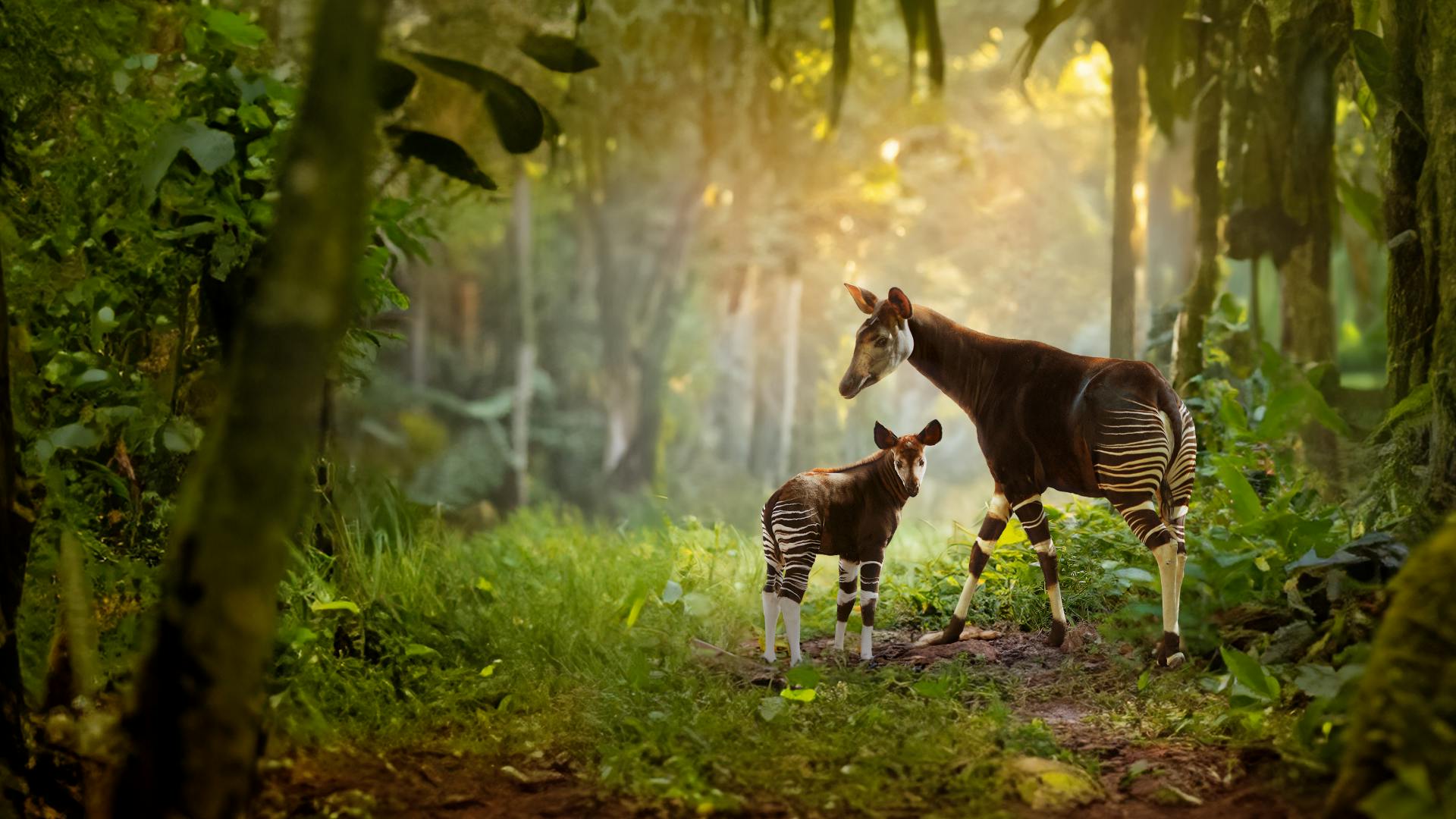
For €10 you contribute to education about the okapi.
